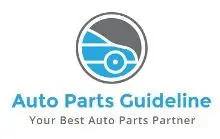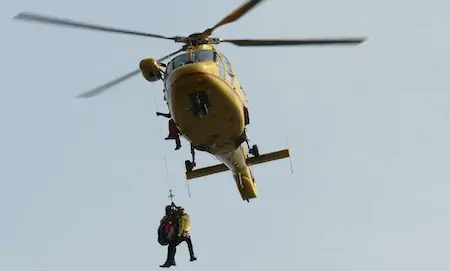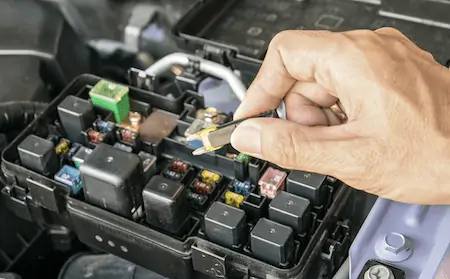Being an owner of a four-wheeler and off-road enthusiast, you are most probably aware of the importance of a winch.
The more powerful winch you have, the more winching speed you will get. And, sometimes, you do require speedy recovery of your vehicle, as otherwise, things can get really life-threatening.
This is where knowing about winch line speed can make a difference. So, what is a winch line speed?
We have arranged all the necessary information in this article about winch line speed, winch line ratings, and other miscellaneous factors on winch lines for your convenience.
Keep reading until you end up having a clear understanding of this matter!
What Is Winch Line Speed?
Winch line speed is the scale of indication of how quickly a winch can pull its cable into its drum. The speed is denoted in feet-per-minute units here in North America.
As the speed of a winch depends on how much load you put on it, usually, speed charts are provided with winches that show data of the likely winch line speed at various loads.
Additionally, as the winch wraps up its cable into its drum, the winch line speed decreases gradually.
Simply put, your winch will pull up its cables faster in the first few cycles of wrapping, and after that, it will reel in the cable at a much lower speed.
Here, look at this example chart below showing the winch line speed of the first wrap of a winch.
| Line Pull (lbs.) | Line Speed (Feet per minute) |
| 0 | 70 |
| 2000 | 16 |
| 4000 | 12 |
| 6000 | 9 |
| 8000 | 7.5 |
| 9500 | 6 |
In order to fully understand what this table is telling you, here are a few other things that you should know.
What Is Line Pull?
For a vehicle winch, the highest amount of pull that it can generate before it starts stalling is called line pull. Didn’t get it? Let’s take an example.
If your winch is rated with 10000 lbs. line pull, it means that it can pull in a load of 10,000 lbs. in its first wrap, before finally, it stalls.
This is measured by determining the amount of pull that a winch can generate without any load in its first wrap. So, is it easy to understand now? Let’s move forward and understand this even deeper.
So, after the first wrap, the capability of line pull will decrease as the winch reels in more and more cable. It is because the drum’s diameter increases because of the winding of the reeled-in cables.
As the diameter of the drum increases gradually, the winch’s ability to pull a certain amount of weight decreases.
See the example chart below, so you can understand better.
| Layer of cable reeled-in | Max pull capability (in lbs.) |
| 5 | 7000 |
| 4 | 7490 |
| 3 | 7990 |
| 2 | 8500 |
| 1 | 9300 |
Well, up until this point, we have talked about the mechanical aspect of a Winch’s capability.
But you should also have ample knowledge about the electrical power requirement of a winch too because it depends on the line pull.
So, let’s get acquainted with a few electrical terms from the discussion below.
What Is The AMP Draw Of Winches?
When the wind is reeling its cable in, it will draw a certain amount of electrical current from the power source depending on the amount of load.
The amount of electrical current that the winch draws from the power source (battery or engine), is called the AMP draw of a winch.
If I have to put it in simple terms, the required electrical current for the winch is proportional to the amount of load put on its cable. This means the bigger the load is put on the cable, the quicker it will consume electrical power.
Thus, a winch will consume more fuel or power to pull in a higher load amount. The amp draw of winches is denoted and calculated in ampere units.
You can look at the table below, showing an example of how much the winch will draw electrical current depending on its line pull.
| Line pull | AMP draw (in Ampere value) |
| 0 | 70 |
| 2000 | 180 |
| 4500 | 270 |
| 6000 | 330 |
| 8200 | 420 |
| 9600 | 490 |
Causes of Low Winch Line Speed
If you feel that your winch’s line speed is on the lower side and are wondering what could be the reason, you should check out the points below.
These are the most common causes of the winches providing lower performance and decreased line speed.
#1. Cold Battery Cell
If you are operating your Jeep at an extremely low temperature, that can affect the battery’s performance. In temperatures below 0 °C, the battery’s capability of providing power is nearly cut to half.
On top of that, if you haven’t been using your winch for an extended period, that can make your battery temporarily stuck. That can also cause your winch line speed to decrease massively.
#2. Damaged Battery
If your battery is damaged altogether, your winch will not only provide you low line speed, but you will also experience stuttering in the winch’s performance.
If you notice low winch line speed, you should probably check your battery and verify if it’s in the correct state or not.
#3. Damaged Connection
Damage to circuits and the electric wire connections of the winch can be a major cause of low winch line speed and underperformance of the winch.
Not maintaining the circuits and not cleaning them regularly can cause the circuit to rust. As a result, the winch will be unable to provide ample performance and ample winch line speed.
Final Words
We have provided all the necessary info that you might need regarding the query “what is winch line speed” in the above discussion.
And, if you want your winch to provide high line speed, you have to have a strong battery and 100% healthy circuit connections in the winch’s hardware.
So, did you find our article helpful? If our information came to your aid, we are honored. We bid you the best of luck.



![Read more about the article How To Winch Backwards [Complete Step by Step Guide]](https://autopartsguideline.com/wp-content/uploads/2021/10/how-to-winch-backwards-300x197.webp)
![Read more about the article How to Recable a Winch [A Complete Guide]](https://autopartsguideline.com/wp-content/uploads/2021/10/how-to-recable-a-winch-300x193.webp)
![Read more about the article How to Install a Winch [Ultimate Step by Step Guide]](https://autopartsguideline.com/wp-content/uploads/2021/10/how-to-install-a-winch-1-300x197.webp)